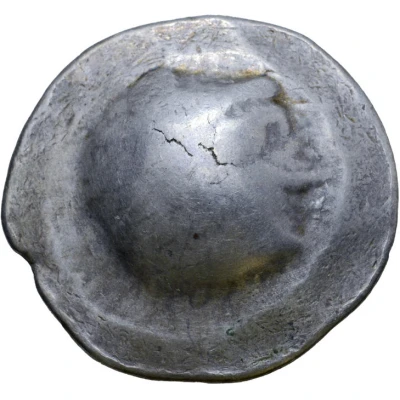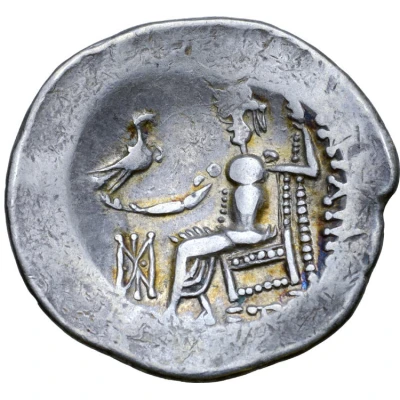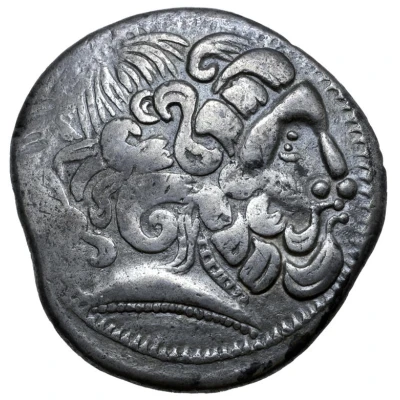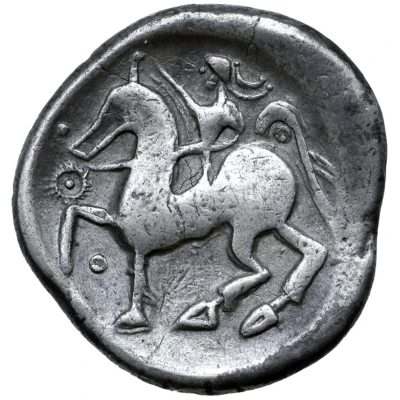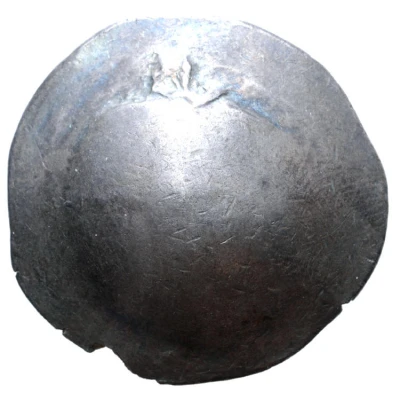
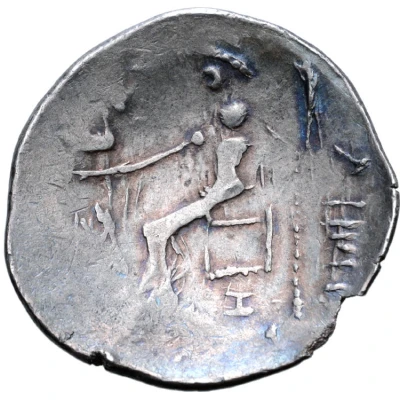

© Roma Numismatics Limited
Tetradrachm Philip III Type 300 BC - 101 BC
| Silver | 13.43 g | 29 mm |
| Issuer | Uncertain Eastern European Celts (Uncertain Central and Eastern European Celts) |
|---|---|
| Type | Standard circulation coin |
| Years | 300 BC - 101 BC |
| Value | Tetradrachm (4) |
| Currency | Drachm |
| Composition | Silver |
| Weight | 13.43 g |
| Diameter | 29 mm |
| Shape | Round (irregular) |
| Technique | Hammered |
| Orientation | Variable alignment ↺ |
| Demonetized | Yes |
| Updated | 2024-10-09 |
| Numista | N#196123 |
|---|---|
| Rarity index | 100% |
Reverse
Stylised Zeus Aëtophoros seated to left; blundered to right, monogram to left, H below throne.
Comment
Examples of this type:• Example #1 (13.43g, 29mm, Very Fine):
© Image courtesy of Roma Numismatics Limited
◦ Ex-Hermann Lanz Collection; published in Michaela Kostial - "Kelten im Osten. Gold und Silber der Kelten in Mittel und Osteuropa, Sammlung Lanz", München, 1997, #930;
◦ Auctioned by Roma Numismatics Ltd, E-Sale 60, 1 August 2019, Lot 48. Sold for 80 GBP;
◦ Auctioned by K. Kress, Auction 162, 20 March 1975, lot 412.
Interesting fact
The Tetradrachm coin was used by the ancient Celts in Eastern Europe during the 3rd century BC. It's interesting to note that the Celtic tribes in this region were known for their skilled metalworking and coinage, and this coin is a great example of their craftsmanship. The coin features an image of a deity on one side and an animal on the other, which was a common design element in Celtic coinage. Additionally, the use of silver in the coin's composition indicates that the Celts had access to valuable resources and trade networks, which helped to facilitate their economic and cultural development.
